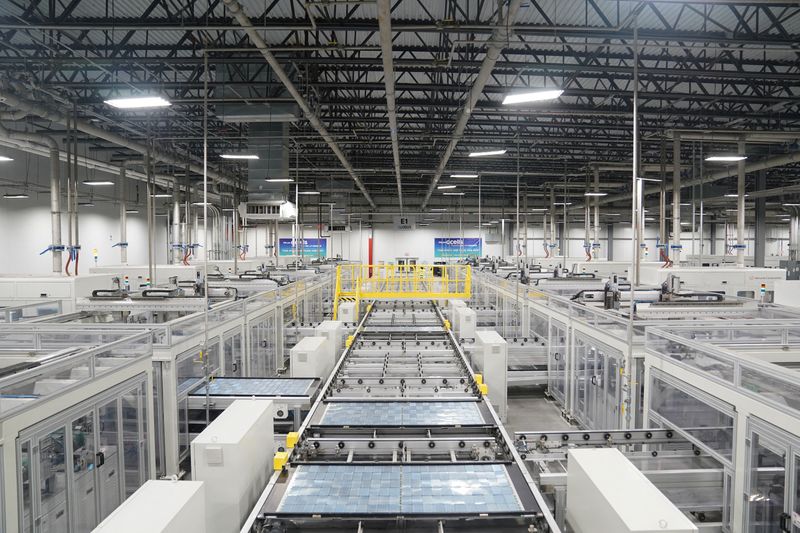US Treasury unveils rules for clean energy manufacturing subsidy
2023.12.14 09:23

© Reuters. FILE PHOTO: Solar panels are built at the QCells solar energy manufacturing factory in Dalton, Georgia, U.S., March 2, 2023. REUTERS/Megan Varner/File Photo
(Reuters) – The U.S. Treasury on Thursday unveiled proposed guidelines for manufacturers seeking to claim a tax credit for making clean energy components like solar panels and batteries, a move aimed at powering the energy transition with American-made products.
The subsidy, created by U.S. President Joe Biden’s climate measure, the Inflation Reduction Act (IRA), is meant to create domestic jobs and reduce reliance on China in the turn away from fossil fuels.
“No matter how much we spend, we know that China is likely to outspend us when it comes to their investment in clean energy,” Wally Adeyemo, deputy Treasury secretary, said on a call with reporters. “What we’re doing is something different.”
The so-called 45X tax credit for advanced manufacturing offers credits for each product made in the United States. The amount of credit depends on the component. Producers of critical minerals used in products like electric vehicle batteries receive 10% of their production costs.
The proposed rules clarify the definitions of eligible components like inverters, wind turbine parts and photovoltaic solar equipment. They also confirm credit amounts and include provisions to prevent claiming tax credits twice for the same component.
The guidance is subject to 60 days of public comment, which Treasury said it will consider before issuing final rules.
Companies have announced $140 billion in clean energy manufacturing investments since passage of the IRA in August 2022, the Treasury Department said. Manufacturers have said that the Treasury rules are critical for moving forward with their planned investments.
“What 45X is demonstrating is that we’re creating a manufacturing renaissance here in the United States that’s being led by U.S. companies,” Adeyemo said.
The department said an analysis of IRA manufacturing investments showed that 69% are in counties where the median household income is below the nationwide median.
The credits will begin phasing out in 2030 and end after 2032 for clean energy components. Critical mineral credits will not phase out.








